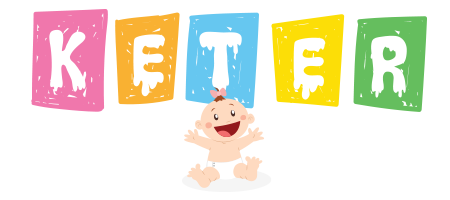
Baby’s first bath is a sweet and fun experience for you and for your baby and your baby smelling wonderful. But from that first bath until teenage years, how often should your child bathe? While baths might be fun at first, squeezing a nightly bath into your bedtime routine might be hard. How often you bathe your child depends a lot on their age and level of activity.
Don’t bathe the baby daily
It might be unavoidable. After all, babies get messy. Spit up and diaper blowouts make a quick bath a necessity sometimes. But when you can help it, it’s best to avoid daily baths for babies under one year old. Instead aim for one full bath a week. Daily baths can dry out your infant’s skin. As your child grows, their skin will be able to handle more frequent bathing. Instead of washing your baby or toddler first thing with soap, start the bath without soap; allowing your baby or toddler to play for a few minutes before washing them up. Less time sitting in soap means less skin irritation. Use plenty of lotion when bath time is done.
It's best not to bathe your baby straight after a feed or when they're hungry or tired. Make sure the room you're bathing them in is warm.
Have everything you need at hand: a baby bath or clean washing-up bowl filled with warm water, two towels, a clean nappy, clean clothes and cotton wool.
- The water should be warm, not hot. Check it with your wrist or elbow and mix it well so there are no hot patches.
- Hold your baby on your knee and clean their face, as described above.
- Next, wash their hair with plain water, supporting them over the bowl.
- Once you've dried their hair gently, you can take off their nappy, wiping away any mess.
- Lower your baby gently into the bowl or bath using one hand to hold their upper arm and support their head and shoulders.
- Don't add any liquid cleansers to the bath water. Plain water is best for your baby's skin in the first month.
- Keep your baby's head clear of the water. Use the other hand to gently swish the water over your baby without splashing.
- Never leave your baby alone in the bath, not even for a second.
- Lift your baby out and pat them dry, paying special attention to the creases in their skin.
- This is a good time to massage your baby. Massage can help them relax and sleep. Avoid using any oils or lotions until your baby is at least a month old.
- If your baby seems frightened of bathing and cries, try bathing together. Make sure the water isn't too hot. It's easier if someone else holds your baby while you get in and out of the bath.
On the surface, bath time is about getting clean, but it also provides a wonderful chance to talk with your kids, help them become independent, or even teach them about science.
Of course, we also know that not all kids love baths all the time, but these tips will help ensure your infant or toddler stays safe, happy, and engaged in the tub until he’s ready to sail on his own.
- Safety first. Always remain in the bathroom and carefully watch your child while he’s in the bath. If you need to leave the room, even for a second, your child
- does too
- The ideal bathwater temperature is the same as your child’s body temperature, so keep the water under 99°F.
- Show your child how to wash himself and only provide help when needed. This will give your child a sense of accomplishment and encourage self care.
- Check water toys for signs of mold. Rinse all toys and allow them to air dry before storing them.
- Talk with your child about why it’s important to keep her body clean in child-friendly language. Discuss the importance of washing away germs that could make her sick.
- If your child has a hard time when her hair is rinsed, show her how to hold a dry washcloth across her forehead, or allow her to wear a plastic visor or even a fun pair of goggles. Some children might want to do all three
- Water can sting scrapes and cuts. If your child has a boo-boo, try letting him use a spray bottle to mist the area before he immerses it in the water.
- Conduct a few experiments. Place an ice cube in the bath water and use words like cold and melt as your child explores. Add two ice cubes and challenge her to try to make one melt faster than the other. Make sure the ice cubes stay out of your child’s mouth for sanitation reasons and to prevent choking.
- Bring non-breakable containers of various sizes into the bathtub. Encourage your child to pour water from one container to another. Use words like full, empty, and phrases like too much and almost full as your child learns about volume and capacity.
- Gather different household objects that sink and float to play with in the bathtub, and talk with your child about how each object behaves in the water. Challenge her to guess whether an object will sink or float.
Checkout these helpful bath time essentials that will help you. Our Must Haves, Keter Bath Seat, Bath Toys and Accessories
